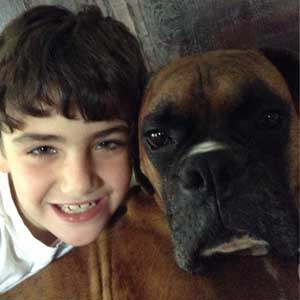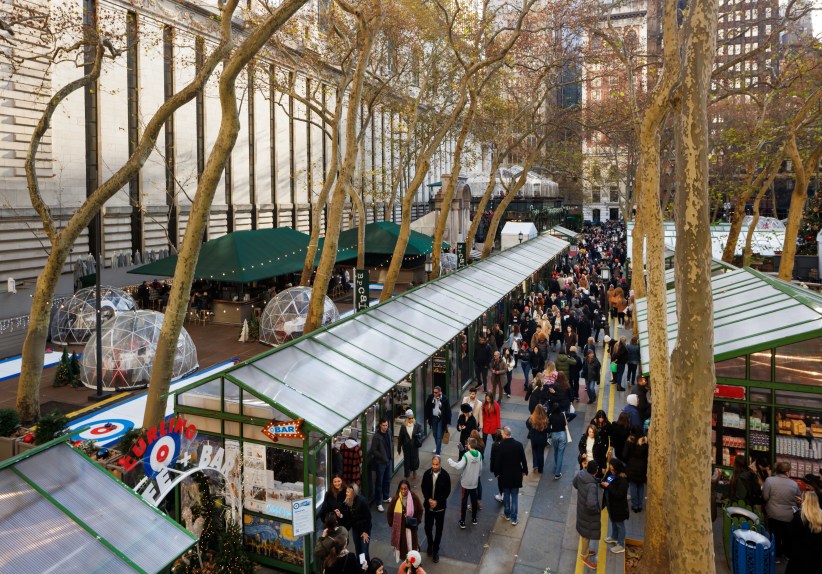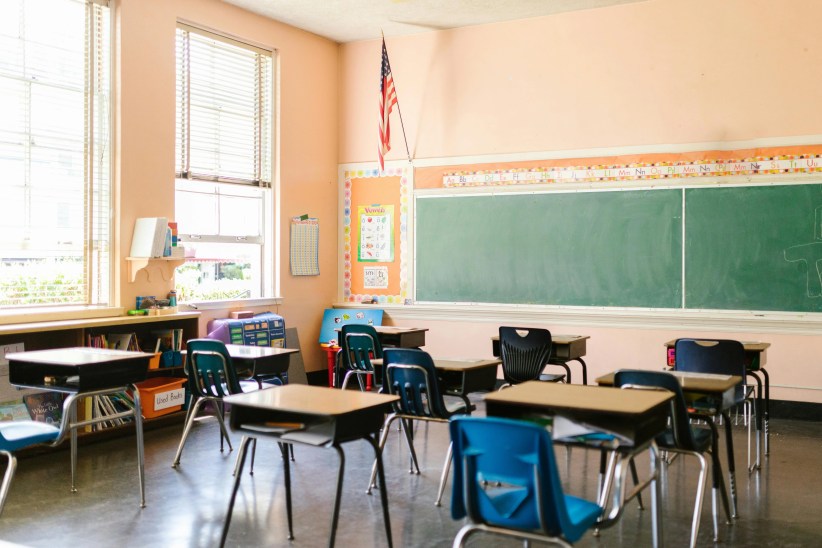A mom works to make the streets safer, so that no other family has to endure the excruciating pain of losing a child in an avoidable traffic crash.
My son Cooper Stock was killed by a reckless taxi driver on Jan. 10, 2014. He and his father were walking home from dinner, crossing the street at West End Avenue and 97th Street on the Upper West Side of Manhattan. They were in the crosswalk, walking with the green light, hand in hand, as always. The driver made a left turn and hit them both.
According to witnesses, the driver came from behind them after they had let another car pass. My husband flew in the air across the street and only suffered minor injuries. But my little 9-year-old boy had no chance after being hit by 3,000 pounds of steel.
We taught my children—my daughter Gianna as well as Cooper–to be cautious and alert at all times when walking around our streets. Cooper never crossed the street without holding the hand of an adult. I naively thought this would keep him safe. But a reckless, inattentive driver destroyed that hope.
Throughout this horrible nightmare, I have learned information that shocked and enraged me. It will probably do the same to you. I want to share some of what I learned—and what you can do to help prevent this from happening to anyone else.
Cars are weapons.
Injuries from car crashes are the leading cause of death among children aged 1 to 12 in NYC. Each year in NYC, approximately 11 children and 9 teenagers die from motor-vehicle-related injuries. An additional 800 children a year are hospitalized with critical injuries, such as brain injuries or paralysis.
In Cooper’s case, video evidence and the testimony of numerous witnesses concur that the driver was completely at fault. The police investigation concluded that he was not inebriated or texting. However, the law does not require drug testing or any sort of psychiatric examination. In my opinion this does not constitute a sufficient investigation. The driver has been quoted as saying “I do not know what happened.”
You can kill someone with a car in NYC and there are no consequences.
The driver who killed my son ultimately received only a traffic ticket for failure to exercise due care. The judge levied a small fine, six months’ license probation, and mandated a remedial driving class. When I got this news it was one of the worst moments for me after Cooper was killed. This is an insult to my son’s memory and denies the significance of his death.
New York State has some of the most lenient traffic laws in the country. The justice system permits judges to revoke a driver’s license if a person has not paid child support or taxes. But if you kill someone and are found guilty, you can keep driving. Even repeat drunken drivers are often given their licenses back.
Streets can be redesigned to boost safety.
Street redesign is a crucial step in preventing crashes. I found out after Cooper died that a large group of concerned citizens had been asking my local Community Board for more than 10 years to make changes at the notoriously dangerous intersection where Cooper was killed.
I watched from my window with tears in my eyes when workers from the Department of Transportation arrived barely a week after the crash, finally installing a median in the street to slow down traffic on West End Ave.
Everyone needs to be more responsible—especially drivers.
It is imperative that pedestrians take responsibility and look at how their own behavior contributes to the current problem. Walking across the street while texting or listening to music is unacceptable. Crossing at designated crosswalks is essential. Everyone needs to follow the rules that are put into place to create safe streets. There needs to be a massive culture change in NYC. This will only happen if everyone does his or her part.
Nevertheless, I grew up with the understanding that pedestrians have the right of way. But this doesn’t seem to be the case in New York City. Why don’t state and city legislators support the rights of crash victims and hold drivers accountable? There needs to be appropriate consequences for drivers who kill and maim people. What is the message to a dangerous driver if the system colludes with this negligence, and gives the driver nothing more than a slap on the wrist?
I do not want one other child to die or any other family to have to go through what my family and Cooper’s friends are going through. I am a founding member of the newly formed organization Families for Safe Streets. We believe that reckless driving is an epidemic that can be eradicated. We were instrumental last year in having the speed limit lowered from 30 miles to 25 miles per hour in NYC. But without enforcement and a greater demand for change, our ability to truly make change—and save lives—will be unattainable.
It is simply unacceptable for us to merely accept that “accidents happen”. All of us can make a difference.
How You Can Help
1. Contact Families for Safe Streets (FamiliesForSafeStreets.com). We are here to help people who have lost loved ones, or have been injured in traffic violence. Please lend your support at first World Remembrance Day for Victims of Traffic Violence in NYC on Sunday, Nov 15. (RSVP here.)
2. Visit crashnotaccident.com. There you can take the pledge to use the term “crash” and not “accident.” The word “accident” implies something unavoidable, suggesting nothing could have been done to prevent it. Have you ever heard someone say “plane accident? Why is death by reckless and distracted drivers minimized into an “oops”? The language we use matters.
3. Request a speed camera to be installed at your children’s schools. Currently in NYC there are 144 cameras being used, yet there are 2,100 schools. Strangely, these cameras are only in service during school hours. So the many children who stay after school for activities are not benefitting from this safety measure.
4. Report bad driving behavior. If you call 311 to complain about a reckless driver, it can help. It is illegal for drivers to be speeding, talking on the phone, or texting while driving. Take a picture of the license information or even a video of a driver who is speeding. File a complaint.
5. Get involved in making your community safer. If there is an intersection in your neighborhood that you feel is dangerous please go to a meeting of your Community Board and insist that they commit to fixing the problems.
6. Educate your children to pay attention and speak up if they are witnessing dangerous behaviors. Insist that your children wait until the walk signal is on, even if others are crossing. Remind your children that they should tell you immediately if they have been in a situation with a driver where they feel unsafe.
Cooper was a real ham. He was a kind child and a good soul. When he loved something, it was with tremendous passion. He had a tight group of buddies since he was 3 years old. They played sports and worshipped the heroes of the Knicks, the Jets, and the Yankees. But his biggest hero was his dad, Richard Stock. Words cannot express the agony of losing a child. The pain is with you every minute of every day.
Cooper’s death has left a gaping hole in our lives and in our community. This horrific tragedy has left its mark on so many people. Cooper was loved immensely and he had an incredible life. But his death was completely avoidable. That will always haunt me.





















